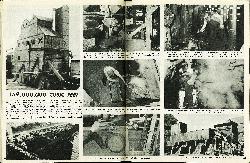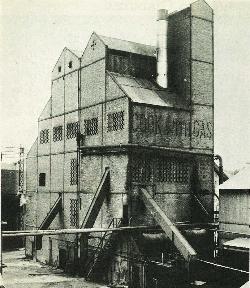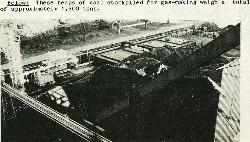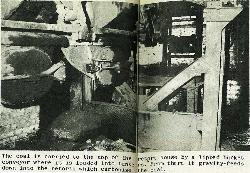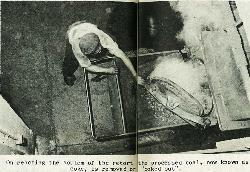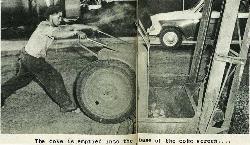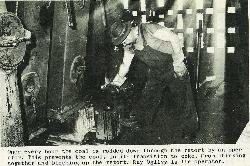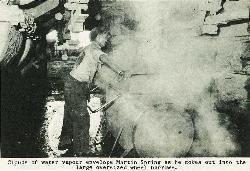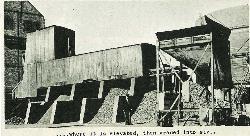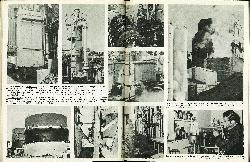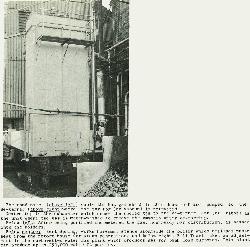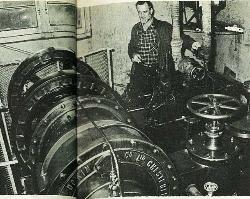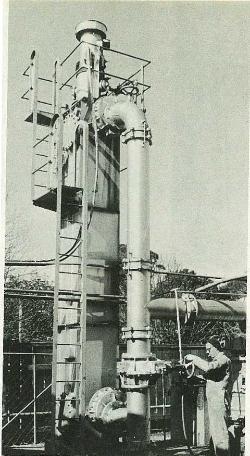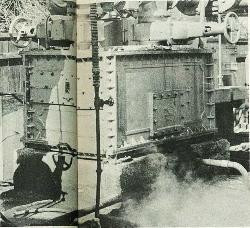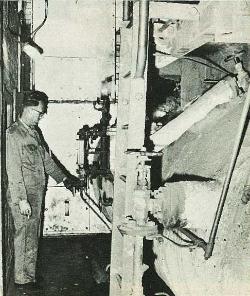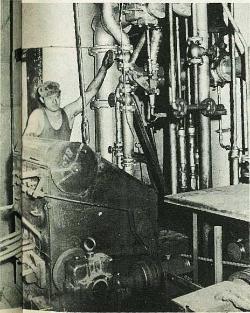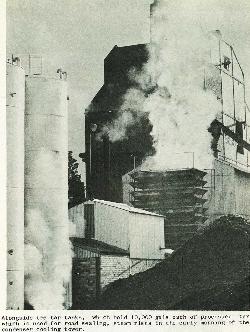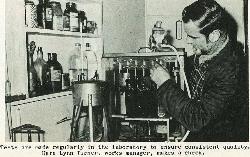44
159,000,000 Cubic Feet
Yes. That's the average supply for one year to consumers of the Gisborne Gas Co. Manufactured from South Island West Coast coal the gas is piped in mains throughout the city by the company.
Standing over 80 ft high the dominant building at the works is the retort house (above). It is here that the actual gas is manufactured before being de-tarred, washed and purified. In the retorts the coal works its way down and in the process is carbonised. Carbonising means that the gas is extracted from the coal through the application of heat.
These heaps of coal stockpiled for gas-making weigh a total of approximately 1,600 tons.
The coal is carried to the top of the retort house by a lipped bucket conveyor where it is loaded into bunkers. From there it gravity-feeds down into the retorts which carbonise the coal.
On reaching the bottom of the retort the processed coal, now known as coke, is removed or "coked out".
The coke is emptied into the base of the coke screen....
45
Once every hour the coal is rodded down through the retort by an operator. This prevents the coal, in its transition to coke, from sticking together and blocking up the retort. Ray Ogilvy is the operator.
Clouds of water vapour envelope Martin Spring as he cokes out into the large oversized wheel barrows.
....where it is elevated, then graded into size.
46
The condenser cools the hot gas which is then drawn off and pumped to the de-tarrer where the tar fog (or vapour) is extracted.
Centre top is the exhauster which draws the cooled gas to the de-tarrer and (at right) is the unit where the gas is water-washed to remove the ammonia after de-tarring.
After being purified and metered the gas, now ready for distribution, is passed into the holders.
Bert Spring, works foreman, stands alongside the boiler which utilises waste heat from the retort house for steam generation, and Bill Tuari makes an adjustment in the carburetted water gas plant which produces gas for peak load purposes. This plant can produce up to 250,000 cubic ft per day.
47


